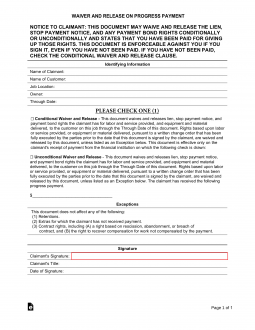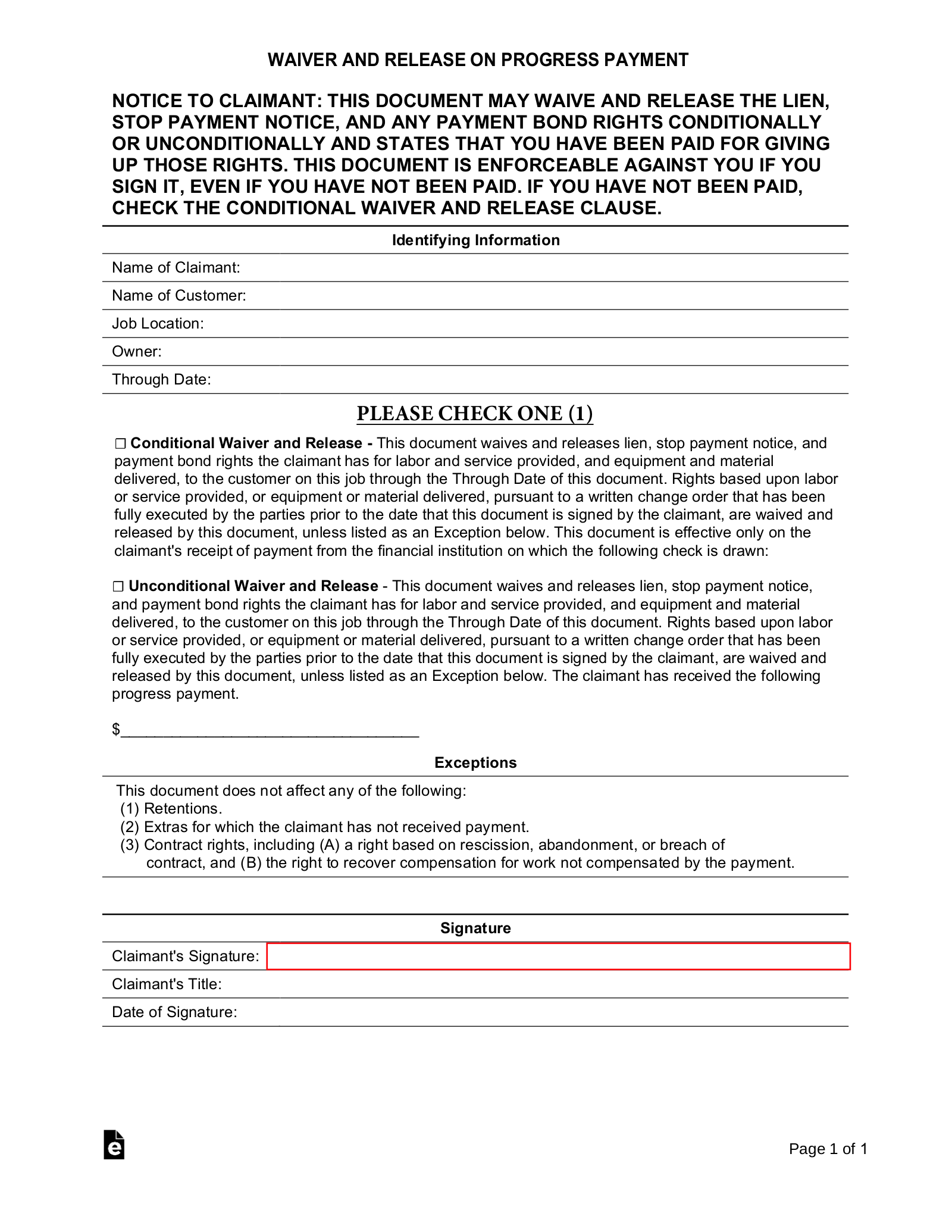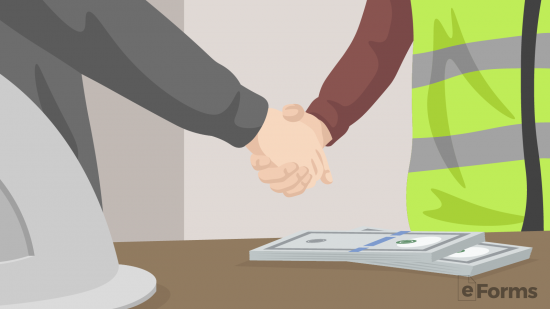Updated August 28, 2023
A contractor’s or mechanic’s lien release is a form that is used when a laborer or supplier has been paid after they had placed a lien for a receivable that was conducted on a property. The lien was most likely filed after not being paid for some time by the real estate owner. Once the owner of the property has paid the party that is owed money and holding the lien, this release should be completed, signed, and filed with the County Registry of Deeds to acquire proper Title.
Also referred to as a: “Release of Mechanic’s Lien”
Table of Contents |
By Type (2)
Conditional – Based upon an agreement by the owner and the unpaid party of an intent to pay. Therefore this form would only be valid if the owner remains owing money to the unpaid party until the debt is satisfied.
Unconditional – Most common type and is signed by both owner and collector once all receivables owed are satisfied.
How to Remove a Mechanic’s Lien (3 steps)
1. Check the Validity of Preliminary Notices

A Preliminary Notice is a legal document that will be required from the determined suppliers and subcontractors (in some cases direct contractors) if there is potential for them to file a lien, make a payment bond claim or serve a stop notice. The preliminary notice should include:
- The name and address of the owner.
- The name and address of the direct contractor.
- The name and address of the construction investor, if applicable.
- The relationship to the individuals whom the preliminary notice is being served (i.e., subcontractor to – name of direct contractor).
- The location of the project.
- The name and address of the individuals who are receiving or will be receiving work.
- By what means the Preliminary Notice was served (i.e., overnight delivery, personal delivery, certified mail).
- All estimated costs associated with the work that has been furnished or will be furnished.
- The preliminary notice must be served within the local state notification requirements.
Dependent on local state laws, Preliminary Notices may not require to be filled with the county recorder’s office to retain validity.
2. Confirm the Mechanic’s Lien

The mechanic’s lien must be served within a specified time frame as outlined by local laws; you can contact your Department of Consumer Affairs to receive further information. The time can begin from the date the work was completed when the owner of the property accepted the improvement or began using said improvement.
Preventing a Mechanic’s Lien
Part of preventing a mechanic’s lien is to ensure you are hiring only licensed contractors. Validate their license or their business is valid and void of complaints by referring to your state’s local Department of Consumer Affairs handling the Contractors State License Board. Additionally, ensure your contractor hires reputable and licensed subcontractors and completes the same review process for them. Contractors should remit payment to subcontractors timely to avoid delay in completing the work, therefore you will want to be advised all of the subcontractors and suppliers they readily work with. If a Preliminary Notice is received, track the entities who are owed payment, and when they are paid, remit payments by joint checks whenever possible, which means both parties are endorsed on the check. Lastly, you can pay the subcontractors and suppliers directly to avoid delays from the direct contractor.
Review your contract to ensure it includes a detailed payment schedule, along with phases and when they will be started and completed. Details should also include the price for each segment, which contractors, subcontractors or suppliers will be used and a list of materials with the cost associated.
A Lien Waiver is also an option available to prevent a mechanic’s lien. This would hold the contractor, subcontractor, supplier, or another party responsible to provide a waiver advising a payment has been received and they will waive the right to file a lien in the future, prior to accepting other payments from the owner.
When to File a Lien Foreclosure Action?
If a contractor, subcontractor, or supplier has not received payment for the project in question, and a mechanics lien has been filed, the next step is to file a lien foreclosure action. This entitles the party to enforce the mechanic’s lien and is entitled to attempt the sale of the property and collect proceeds to satisfy the claimant’s balance or debt. A lien foreclosure action is considered a lawsuit and a matter handled by a court of law.



